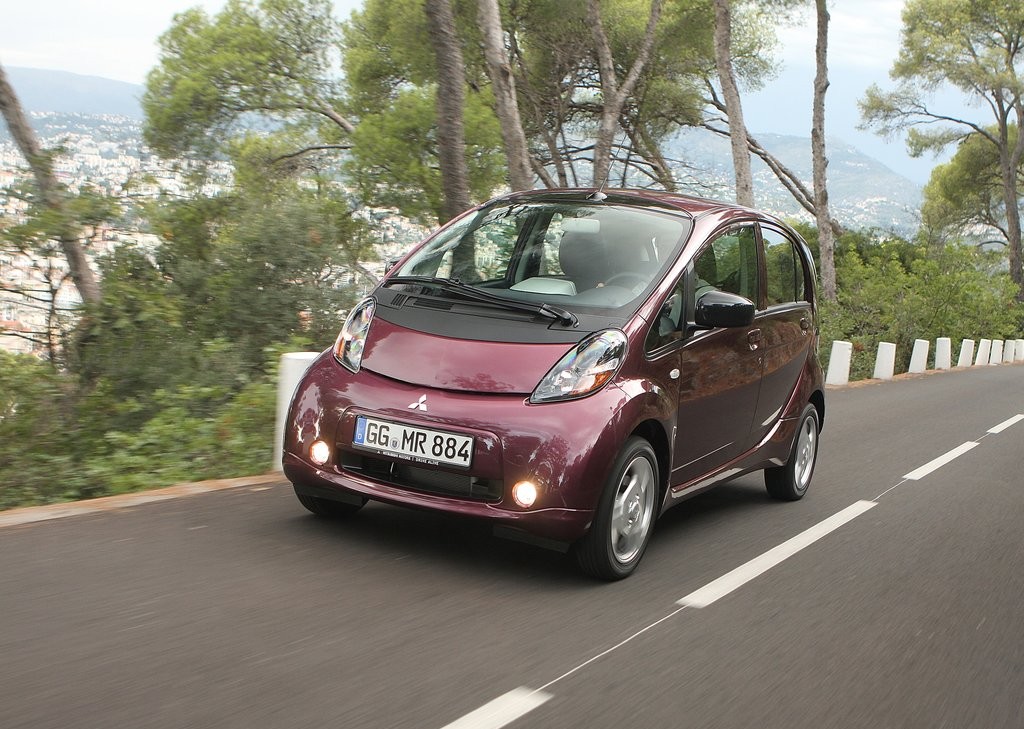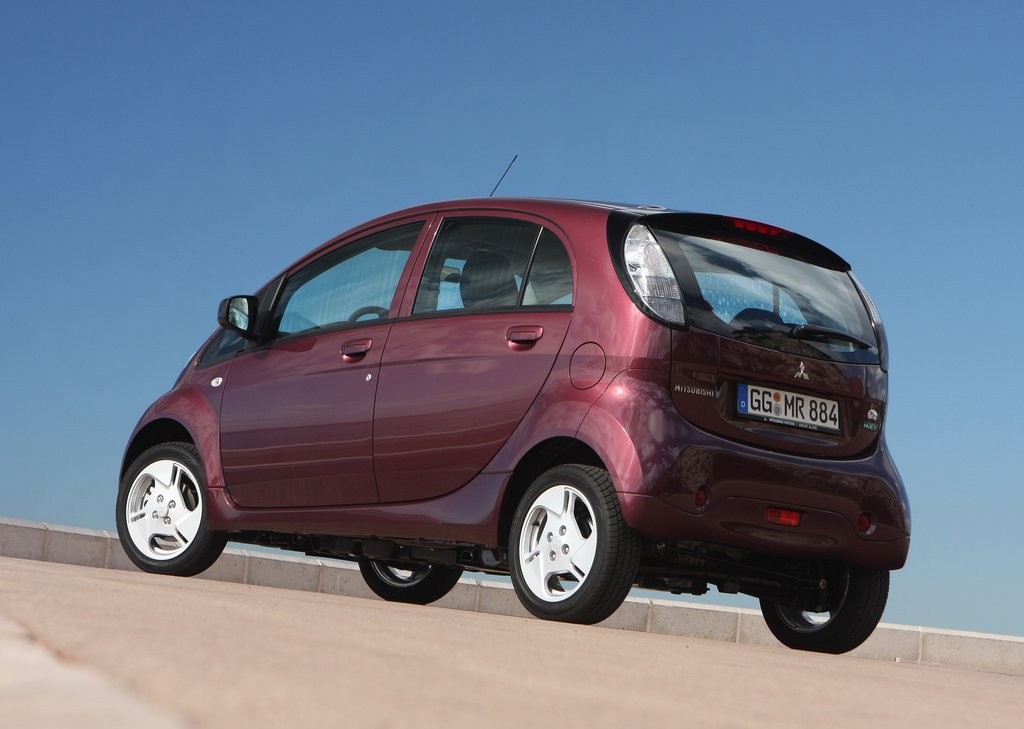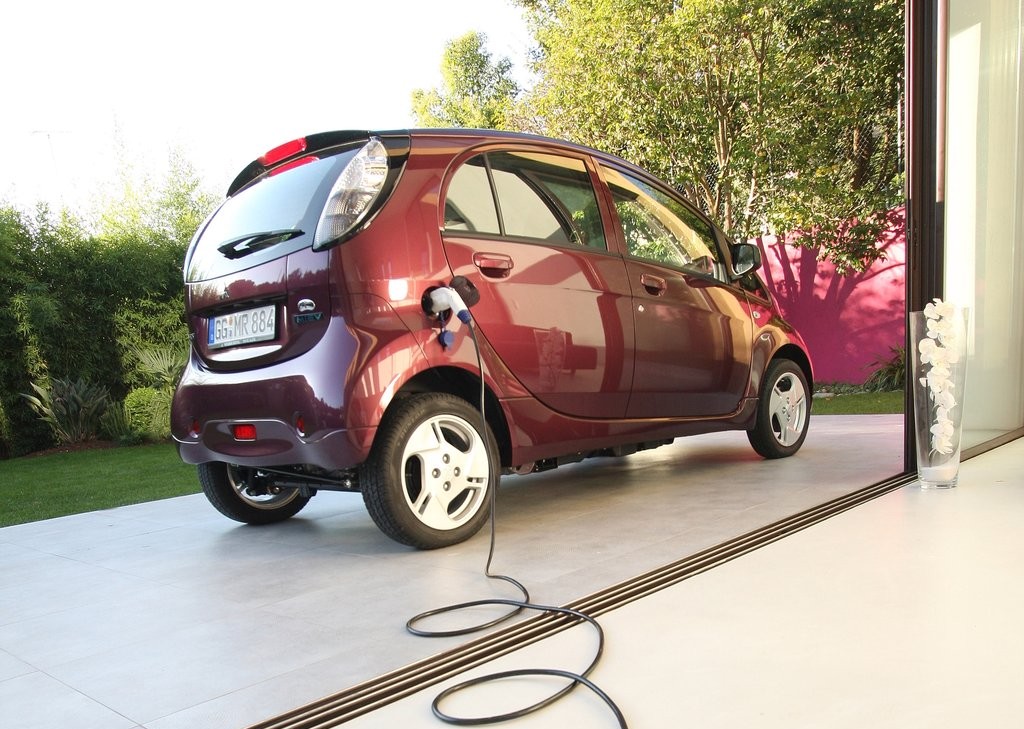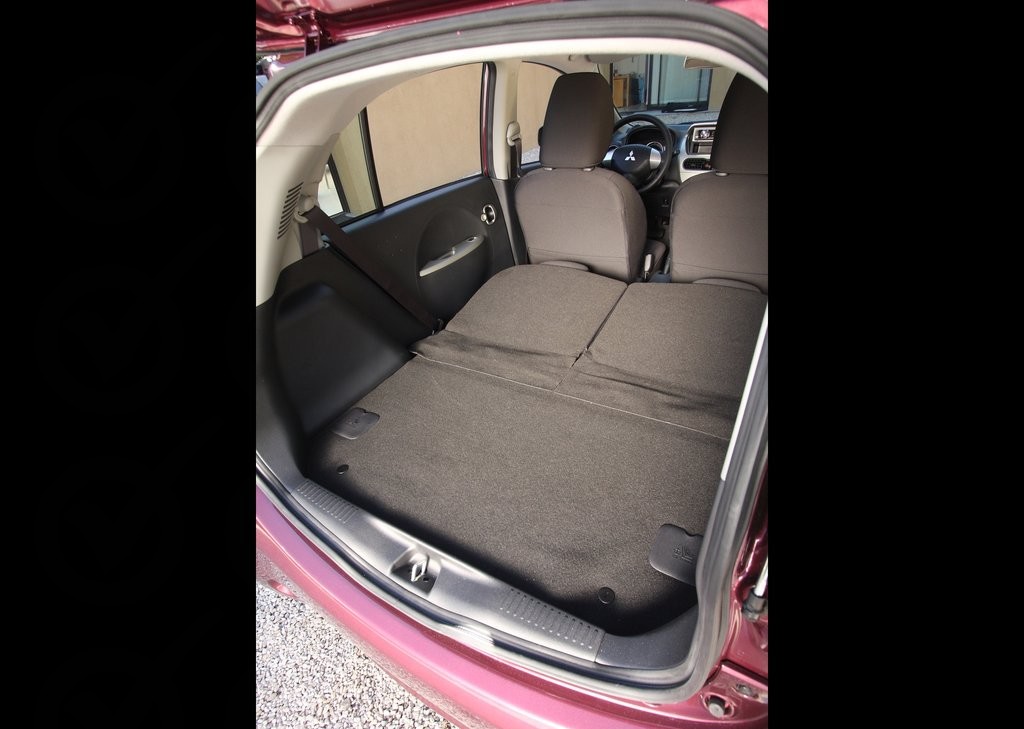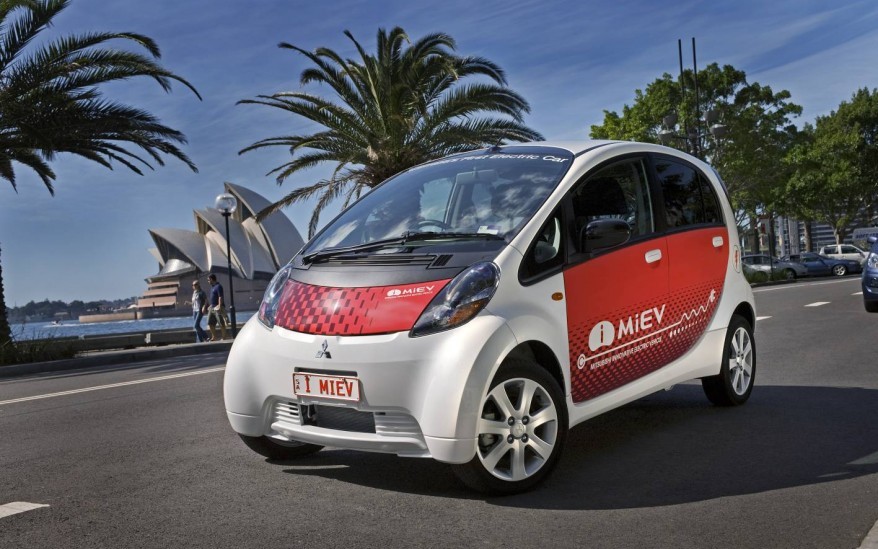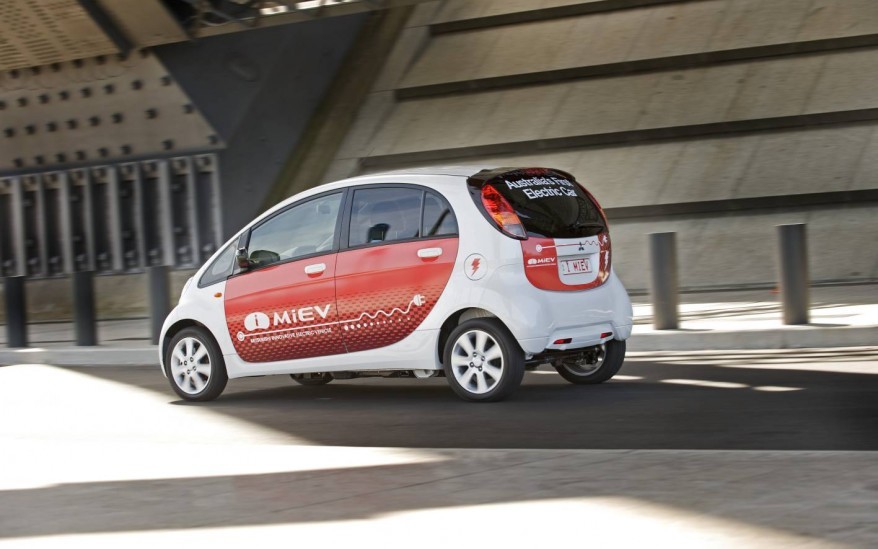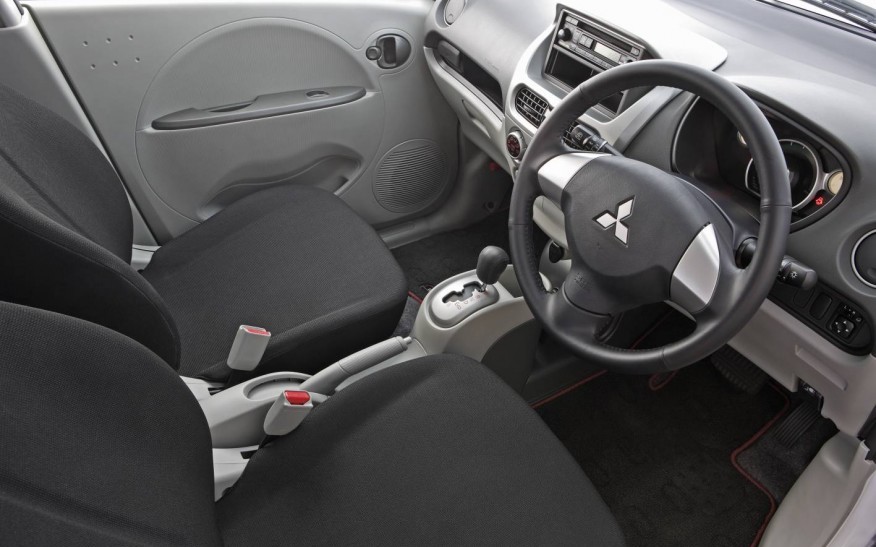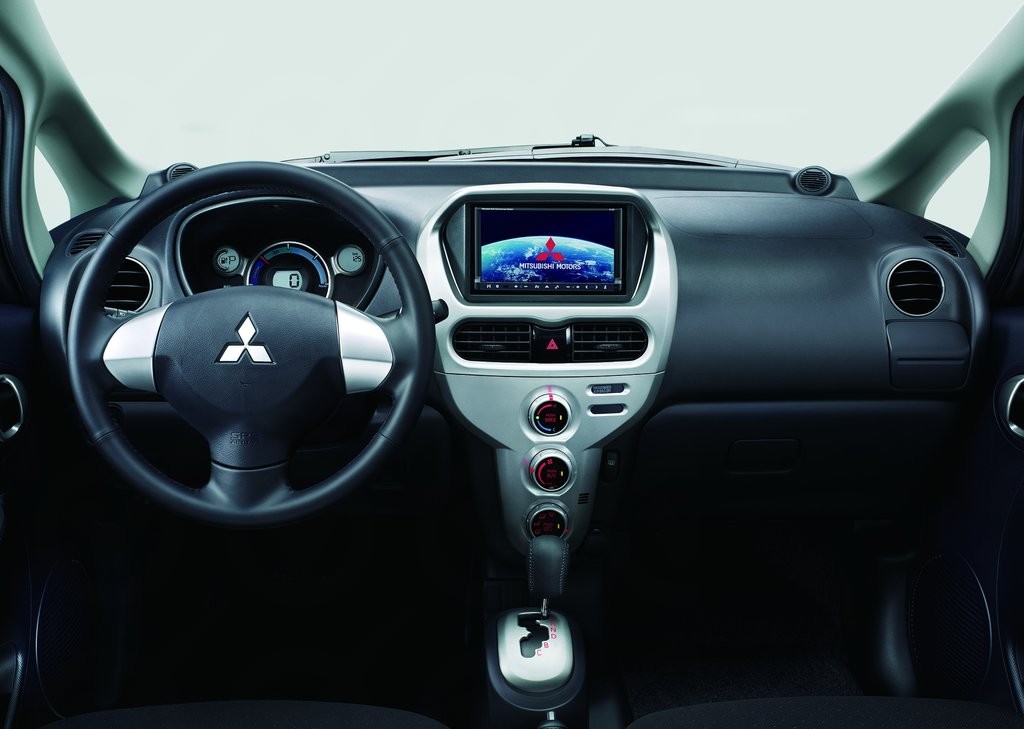
- Economical electric engine
- Cheap interior plastics
- Short-travel suspension lacks compliance
- Lack of steering wheel adjustment
- Limited range
Overview
The Mitsubishi i-MiEV was a light, four-seat electric vehicle. The first i-MiEVs arrived in Australia in April 2009 for field trials and were leased to fleets from July 2010. From August 2011, the i-MiEV was available to the general public, coinciding with a number of updates such as additional safety equipment, a larger rear bumper and privacy glass.
Manufactured at Mitsubishi’s Mizushima plant in Japan, the rear-wheel drive i-MiEV had a synchronous single permanent magnet motor powered by a 16 kWh lithium-ion battery pack that was housed under the rear seat. Fully charging the i-MiEV’s battery required approximately seven hours from a 240 volt system, with owners requiring a 15 ampere charging point to be installed in their garage or workplace.
The i-MiEV featured three drive modes: Drive (‘D’), Brake (‘B’ for downhill, regenerative braking) and Eco (subsequently renamed ‘C’ for comfort). The i-MiEV had a fully charged ‘target’ range of 155 kilometres, though achieving this range depended upon driver behaviour and traffic conditions. The i-MiEV’s top speed was limited to 130 km/h and Mitsubishi provided a five-year warranty on the i-MiEV’s battery even though it was estimated to retain 80 per cent efficiency after 10 years.
| Motor | Battery | Trans. | Peak power | Peak torque |
|---|---|---|---|---|
| Synchronous single permanent magnet | 16 kWh lithium-ion | 1sp reduction gear | 49 kW | 180 Nm |
Safety equipment
Standard safety equipment for the i-MiEV included dual front airbags, ABS, electronic brake force distribution, brake assist and front seatbelts with pretensioners and load limiters; from August 2011, the i-MiEV was fitted with front side airbags, full-length curtain airbags, electronic stability control and traction control.
ANCAP and Euro NCAP testing
In ANCAP crash testing , a post-August 2011 i-MiEV received a four star adult occupant protection rating with a score of 28.35 out of 37. In the frontal offset test, protection from serious chest and leg injury was marginal for the driver. In the side impact test, there was a moderate risk of serious chest injury for the driver. A pole test, which could have earned additional points, was not conducted. After the test, the electrical system passed regulatory safety checks.
In Euro NCAP testing , a i-MiEV – equipped with safety equipment as per the post-August 2011 models – received a four star safety rating which included a 73 per cent adult occupant protection rating and a 78 per cent child occupant protection rating. Inspection of the i-MiEV after the frontal offset impact indicated that several structures had reach the limit of their load-bearing capacity such that the passenger compartment may not be able to withstand an impact at a higher speed. As a result, the score for protection of the driver’s chest was penalized and chest protection was rated as marginal. Furthermore, most of the floor in the driver’s footwell was heavily distorted, leading to a marginal rating for protection of the driver’s feet and ankles. In the side impact, the driver’s door opened and the car was penalised, although readings showed adequate protection. In the pole test, however, readings indicated poor protection of the chest.
Features
Standard features for the i-MiEV included a two speaker sound system with CD player, heated front seats, a leather-wrapped steering wheel and gearshift, remote central locking, split and folding rear seats, power windows and folding mirrors, a height adjustable driver’s seat, 12 volt power outlet, trip computer, alarm and immobiliser. From August 2011, the i-MiEV was fitted with automatic headlights and keyless entry.
Brochure
Related links
